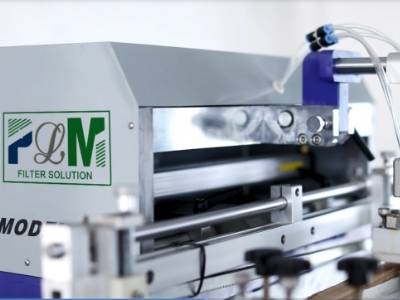Key Technologies in the PP Injection Molding Process and PLKS-1500W Equipment
In filter products, numerous components utilize PP injection molding process, such as end caps of eco-friendly oil filters, as well as housings and frames of certain air filters. The PLKS-1500W injection molding machine, for instance, manufactures these parts through the injection molding process, offering advantages such as high production efficiency, low cost, and energy-saving and environmental benefits.
Screw Design and the Plasticization Process
In PP processing, the screw plays a vital role, directly influencing material flowability and the product quality.
The compression ratio of the screw determines both melt pressure and uniformity, while also affecting the dispersion efficiency of color masterbatches, additives, and modifiers.
Plastic melting relies not only on heating systems but also on frictional heat generation and residence time, making rational screw structure essential.
The PLKS-1500W injection molding machine optimizes screw geometry for PP material characteristics, employing a stepwise compression ratio design to ensure efficient compounding and minimize color inconsistency caused by uneven pigment distribution. Additionally, the machine precisely controls frictional heat generation to prevent of PP thermal degradation. For complex compounding requirements, twin-screw or two-stage screw configurations can be adopted in specific applications.
Melt Control and Flow Optimization
The primary function of the heating system is to gradually melt PP pellets into a homogeneous fluid, enhancing flowability. However, precise temperature control is crucial, as deviations may cause product defects. For instance, PP material is prone to thermal degradation under excessive temperatures, necessitating smooth material flow during mold cavity filling to avoid short shots or backflow.
Backflow refers to the phenomenon where material flow velocity exceeds output rate. While this may temporarily increase melt flow rate (MFR), it risks uneven MFR distribution and elevated defect rates. The PLKS-1500W addresses these challenges by adopting a dual closed-loop pressure control system that compensates for melt pressure fluctuations in real-time, effectively resolving underfilling and flash issues. Furthermore, this model is equipped with an intelligent back pressure adjustment function, which can automatically stabilize MFR by adapting to recyclate ratio variations.
Mold and Die Head Design
The design of mold is critical in determining the final geometry and quality of products. For PP injection-molded parts with complex 3D structures, mold design must account for shrinkage rates and cooling uniformity to prevent warpage and internal stress. In contrast, continuous-profile products (e.g., flat sheets, strips, or tubes) prioritize die head design simplicity but require precise material distribution uniformity to eliminate flow marks or thickness deviations.
The PLKS-1500W integrates high-precision mold adaptation technology, enabling compatibility with diverse product geometries. For instance, its optimized coat-hanger die head enhances material flow consistency, thereby improving the stability of extrusion molding process. Furthermore, this model features a quick mold change system, achieving mold switching and preheating calibration within 15 minutes, which greatly boosts production efficiency.
Cooling Control and Molding Stability
The cooling process is critical for the dimensional stability of molded parts. Injection molds are typically equipped with cooling channels to reduce material temperature and accelerate solidification, while extrusion processes rely on roller cooling, air knife cooling, or hollow blowing methods to enhance cooling efficiency.
The PLKS-1500W offers modular cooling solutions with water cooling mode, achieving a 30% efficiency improvement over conventional methods. By optimizing cooling pathways, this system effectively reduces product warpage, internal stress, and uneven shrinkage, thereby enhancing overall quality.
Shrinkage Control and Dimensional Accuracy
All plastic materials undergo varying degrees of shrinkage upon cooling, and polypropylene (PP) is no exception. Shrinkage primarily stems from thermal expansion and contraction, as well as internal stresses generated during crystallization. During production, the effects of shrinkage can be minimized by extending cooling time and maintaining holding pressure. Furthermore, differences in shrinkage rates between materials must be considered during mold design. For example, adding an appropriate amount of low-density polyethylene (LDPE) to PP extrusion process can effectively address necking issues and improve dimensional accuracy.
Precise control of the PP injection molding process is the core guarantee for achieving high sealing performance and durability in filter components. From flow optimization in screw design, to melt stability regulation, and mold adaptability innovation, every detail directly impacts product performance and manufacturing costs.
The PLKS-1500W injection molding machine, equipped with advanced technology and precise process control, deeply aligns with industry demands, making it an ideal choice for achieving efficient and stable production.










